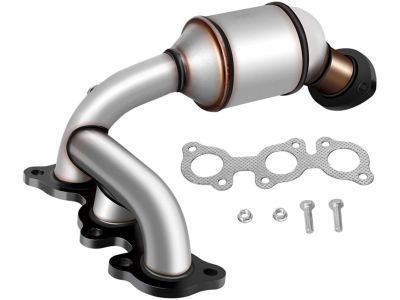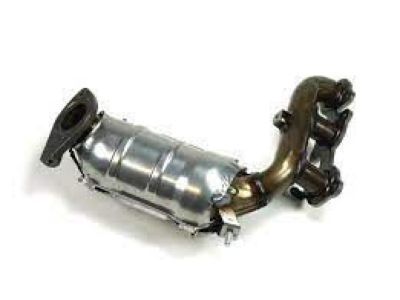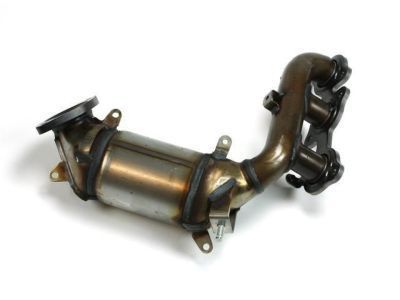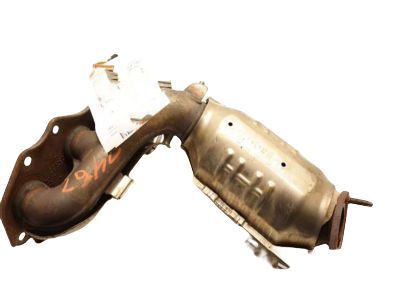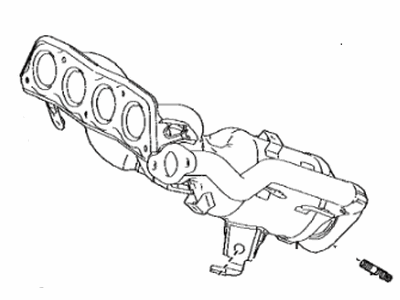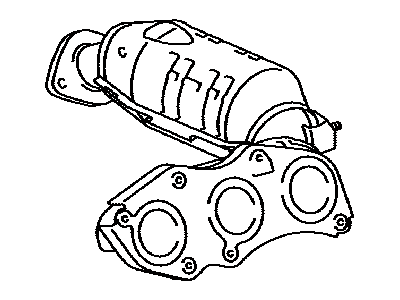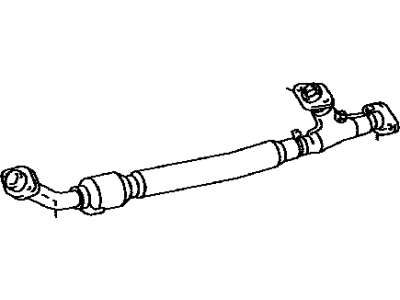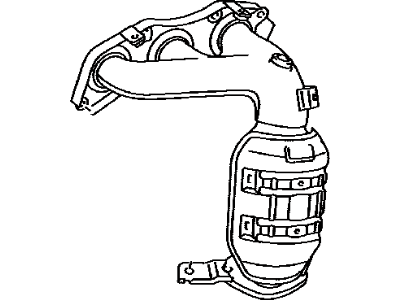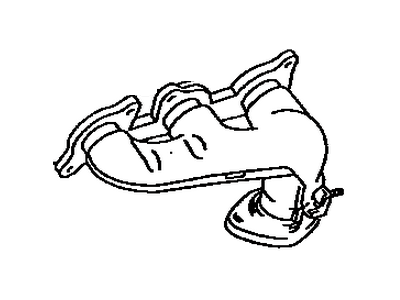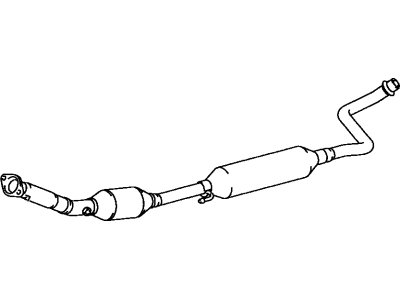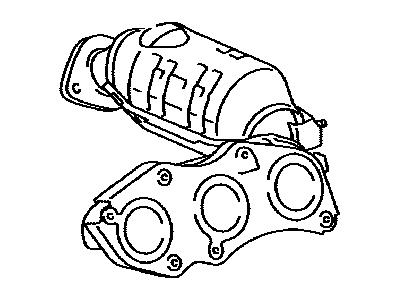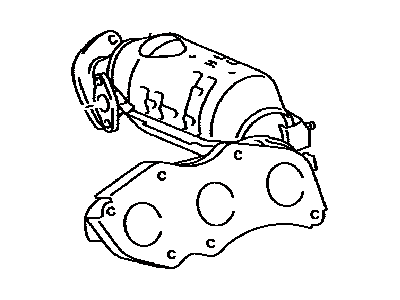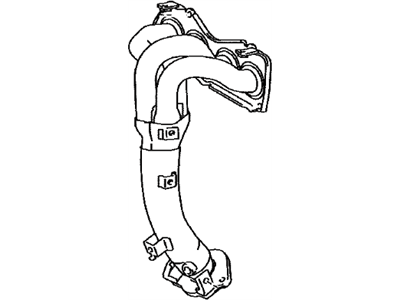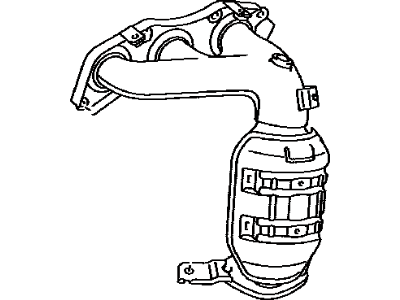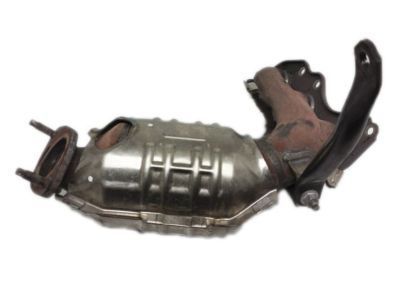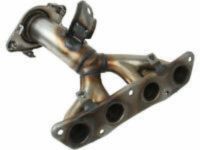×
- Live Chat
- 1-888-905-9199


My Garage
My Account
Cart
Genuine Toyota Sienna Catalytic Converter
Cat. Converter- Select Vehicle by Model
- Select Vehicle by VIN
Select Vehicle by Model
orMake
Model
Year
Select Vehicle by VIN
For the most accurate results, select vehicle by your VIN (Vehicle Identification Number).
45 Catalytic Converters found
Toyota Sienna Exhaust Manifold Converter Sub-Assembly, No.2
Part Number: 25052-20190$590.17 MSRP: $738.80You Save: $148.63 (21%)Ships in 1-3 Business DaysToyota Sienna Right Exhaust Manifold Sub-Assembly
Part Number: 17140-20030$481.65 MSRP: $708.99You Save: $227.34 (33%)Ships in 1-3 Business DaysToyota Sienna Exhaust Manifold Converter Sub-Assembly
Part Number: 25051-20040$620.37 MSRP: $776.61You Save: $156.24 (21%)Ships in 1-3 Business DaysToyota Sienna Right Exhaust Manifold Sub-Assembly
Part Number: 17140-0P270$453.81 MSRP: $668.01You Save: $214.20 (33%)Toyota Sienna Exhaust Manifold Converter Sub-Assembly, No.2
Part Number: 25052-20110$327.54 MSRP: $399.42You Save: $71.88 (18%)Ships in 1-3 Business DaysToyota Sienna Exhaust Manifold
Part Number: 17141-F0010$630.53 MSRP: $928.14You Save: $297.61 (33%)Ships in 1-2 Business DaysToyota Sienna Right Exhaust Manifold Sub-Assembly
Part Number: 17104-20030$232.89 MSRP: $333.95You Save: $101.06 (31%)Ships in 1-2 Business DaysToyota Sienna Front Exhaust Pipe Assembly
Part Number: 17410-0A400$270.18 MSRP: $354.84You Save: $84.66 (24%)Ships in 1-3 Business DaysToyota Sienna Left Exhaust Manifold Sub-Assembly
Part Number: 17150-0P090$876.18 MSRP: $1289.74You Save: $413.56 (33%)Ships in 1-2 Business DaysToyota Sienna Exhaust Manifold Sub-Assembly Right
Part Number: 17104-20010$232.89 MSRP: $333.95You Save: $101.06 (31%)Ships in 1-3 Business DaysToyota Sienna Front Exhaust Pipe Assembly
Part Number: 17410-0A390$325.99 MSRP: $428.15You Save: $102.16 (24%)Ships in 1-3 Business DaysToyota Sienna Exhaust Manifold Converter Sub-Assembly, No.2
Part Number: 25052-20020$323.96 MSRP: $395.07You Save: $71.11 (18%)Ships in 1-3 Business DaysToyota Sienna Left Exhaust Manifold Sub-Assembly
Part Number: 17142-20050$159.27 MSRP: $226.44You Save: $67.17 (30%)Ships in 1-3 Business DaysToyota Sienna Front Exhaust Pipe Assembly
Part Number: 17410-0P591$254.55 MSRP: $334.31You Save: $79.76 (24%)Ships in 1-3 Business DaysToyota Sienna Front Exhaust Pipe Assembly
Part Number: 17410-0P180$260.27 MSRP: $341.83You Save: $81.56 (24%)Ships in 1-3 Business DaysToyota Sienna Right Exhaust Manifold Sub-Assembly
Part Number: 17140-0P160$539.70 MSRP: $794.43You Save: $254.73 (33%)Toyota Sienna Right Exhaust Manifold Sub-Assembly
Part Number: 17140-0P250$874.31 MSRP: $1286.99You Save: $412.68 (33%)Toyota Sienna Right Exhaust Manifold Sub-Assembly
Part Number: 17140-0P330$795.01 MSRP: $1170.25You Save: $375.24 (33%)Ships in 1-3 Business DaysToyota Sienna Left Exhaust Manifold Sub-Assembly
Part Number: 17150-0P150$1039.14 MSRP: $1529.60You Save: $490.46 (33%)Ships in 1-3 Business DaysToyota Sienna Right Exhaust Manifold Sub-Assembly
Part Number: 17140-0P090$575.87 MSRP: $847.68You Save: $271.81 (33%)
| Page 1 of 3 |Next >
1-20 of 45 Results
Toyota Sienna Catalytic Converter
If you are in demand for superior quality and affordable OEM Toyota Sienna Catalytic Converter, then shop with us! We own a wide range of the reduced-priced genuine Toyota Sienna Catalytic Converter. You can purchase in confidence as all parts come with a manufacturer's warranty. Any issues with our products? No need to worry as we have a hassle-free return policy to guide you every step of the way.
Toyota Sienna Catalytic Converter Parts Questions & Experts Answers
- Q: What is the general description and maintenance procedure for a catalytic converter on Toyota Sienna?A: Because of a Federally mandated extended warranty covering emissions-related components like the catalytic converter, it is advisable to consult a dealer service department before replacing the converter at your own expense. The catalytic converter is an emission control device added to the exhaust system to reduce pollutants from the exhaust gas stream, with two types available: the conventional oxidation catalyst, which reduces hydrocarbon and carbon monoxide levels, and the three-way catalyst, which lowers oxides of nitrogen, hydrocarbons, and carbon monoxide. Models from 2001 to 2006 feature three catalytic converters, including a warm-up three-way catalytic converter as part of the front exhaust manifold and another in the pipe from the rear manifold, with the main exhaust pipe containing the final converter. The test equipment for diagnosing a malfunctioning converter is expensive and sophisticated, so it is recommended to take the vehicle to a dealer or authorized emissions inspection facility for diagnosis and repair. When servicing underbody components, check the converter for leaks, corrosion, dents, and other damage, and inspect the welds and flange bolts attaching the converter to the exhaust system; if any damage is found, replacement is necessary. Although catalytic converters rarely break, they can become plugged, and a vacuum gauge can be used to check for a restricted converter by connecting it to an intake manifold vacuum source, warming the engine, and recording vacuum readings at idle and after quickly opening the throttle. If the reading after the fourth test is more than one in-Hg lower than the idle reading, the exhaust system may be restricted. For models from 2001 and later, warm-up converters cannot be replaced separately, so it is important to spray the nuts on the exhaust flange studs with penetrating oil before removal, disconnect the flange at the rear of the converter, and cut the front of the converter from the pipe for removal, with installation being the reverse of removal.
Related Toyota Sienna Parts
Browse by Year
2024 Catalytic Converter 2023 Catalytic Converter 2022 Catalytic Converter 2021 Catalytic Converter 2020 Catalytic Converter 2019 Catalytic Converter 2018 Catalytic Converter 2017 Catalytic Converter 2016 Catalytic Converter 2015 Catalytic Converter 2014 Catalytic Converter 2013 Catalytic Converter 2012 Catalytic Converter 2011 Catalytic Converter 2010 Catalytic Converter 2009 Catalytic Converter 2008 Catalytic Converter 2007 Catalytic Converter 2006 Catalytic Converter 2005 Catalytic Converter 2004 Catalytic Converter 2003 Catalytic Converter 2002 Catalytic Converter 2001 Catalytic Converter 2000 Catalytic Converter 1999 Catalytic Converter 1998 Catalytic Converter
